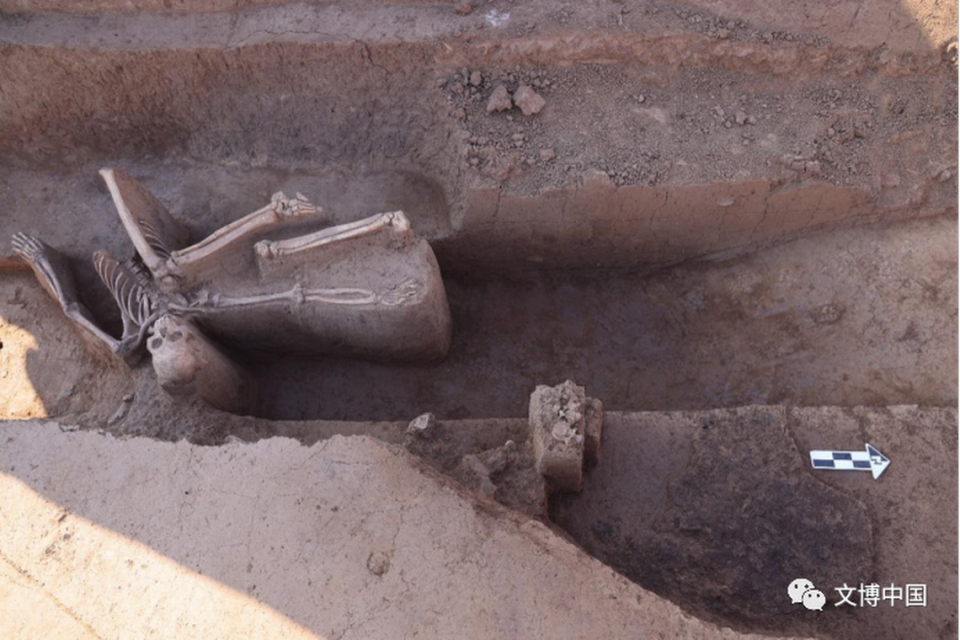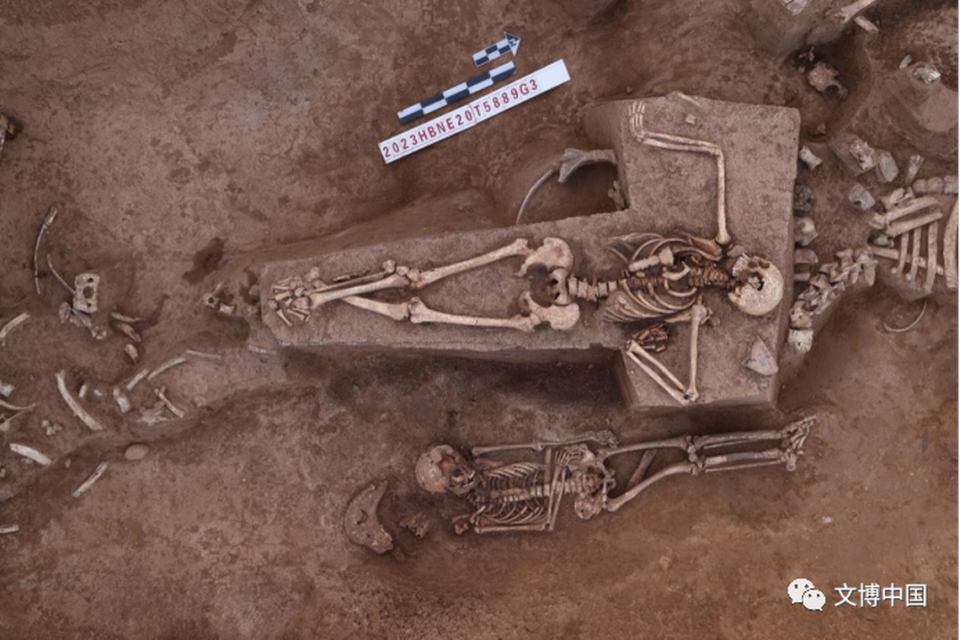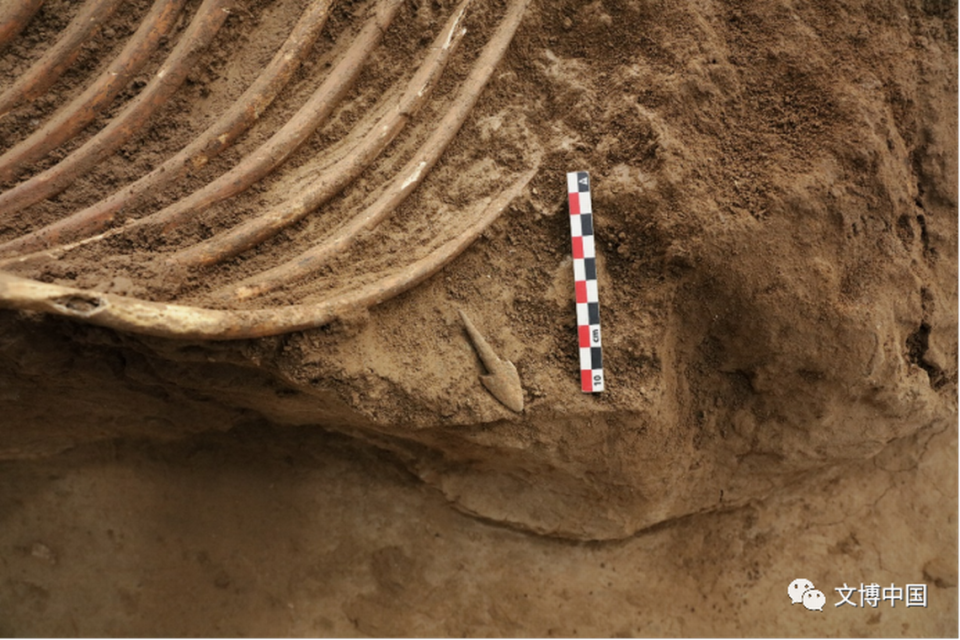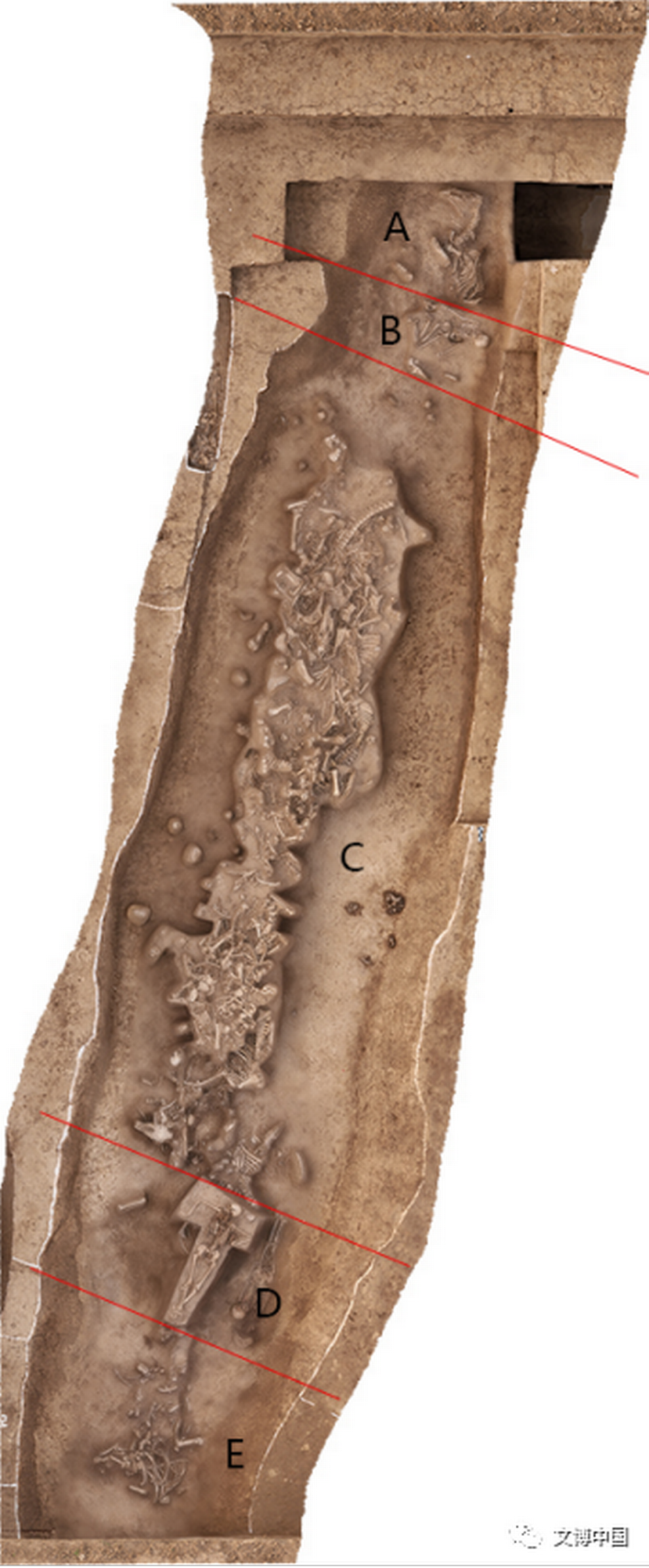Unprecedented 3,000-year-old sacrificial pit found in China. See the chilling site
Buried by dirt and forgotten to time, an ancient city in China hid a gruesome secret for thousands of years. Not anymore.
Archaeologists were excavating the moat ruins of the ancient city of Huanbei when they uncovered a bone-filled ditch, according to a Jan. 11 news release from the Institute of Archaeology at the Chinese Academy of Social Sciences and the China Archaeology Network.
The roughly 60-foot-long ditch was filled with dozens of carefully arranged bones. Archaeologists identified it as a 3,000-year-old sacrificial pit.
Four human skeletons were unearthed from the sacrificial pit, the institute said. The youngest skeleton was a minor, one was a boy between the ages of 12 and 15, another was a male teenager and the oldest was a man between 30 and 35 years old.
A chilling photo shows the youngest skeleton lying on its back, its right arm stretched outward.

Archaeologists found traces of burnt soil around the human skeletons, the institute said. No cause of death was identified.
The oldest skeleton was found atop a table-like structure, archaeologists said. The arrangement of its arms and hands indicated an abnormal death. The teenage boy skeleton was found nearby at the bottom of the ditch. A photo shows the pair and several more bones scattered around them.

The rest of the sacrificial pit was filled with nine horse skeletons, three cow heads, bird bones, pig skulls and the bones of other unidentified small mammals, archaeologists said. Some dismembered human bones were also found scattered throughout the pit.
A few bone arrowheads were unearthed in a horse’s rib cage, the institute said and a photo shows.
Archaeologists dated the bones to the late Shang Dynasty, over 3,000 years ago, the release said. This dynasty, also known as the Yin Dynasty, began around 1600 B.C. and ended around 1100 B.C., according to Britannica.

Sacrificial remains from the Shang Dynasty have been found previously but are considered rare, archaeologists said. The pit found in Huanbei was described as unprecedented because of its size, quantity of bones and potential sacrificial methods.
A photo shows the rectangular pit from above.

Excavations of the sacrificial pit are still ongoing, the institute said. Bone traces at the edges of the dig suggest the pit might be larger.
The ancient city of Huanbei is in Anyang, Henan province, and about 300 miles southwest of Beijing.
Google Translate and Baidu Translate were used to translate the news release from the Institute of Archaeology at the Chinese Academy of Social Sciences and the China Archaeology Network.
Abandoned wells hid record books from 1,700 years ago. See ancient finds from China
Rare coins minted during ancient Olympic Games unearthed in Greece, photos show
Satellite images reveal desert ruins — and lead to 4,000-year-old ‘walled oasis’


